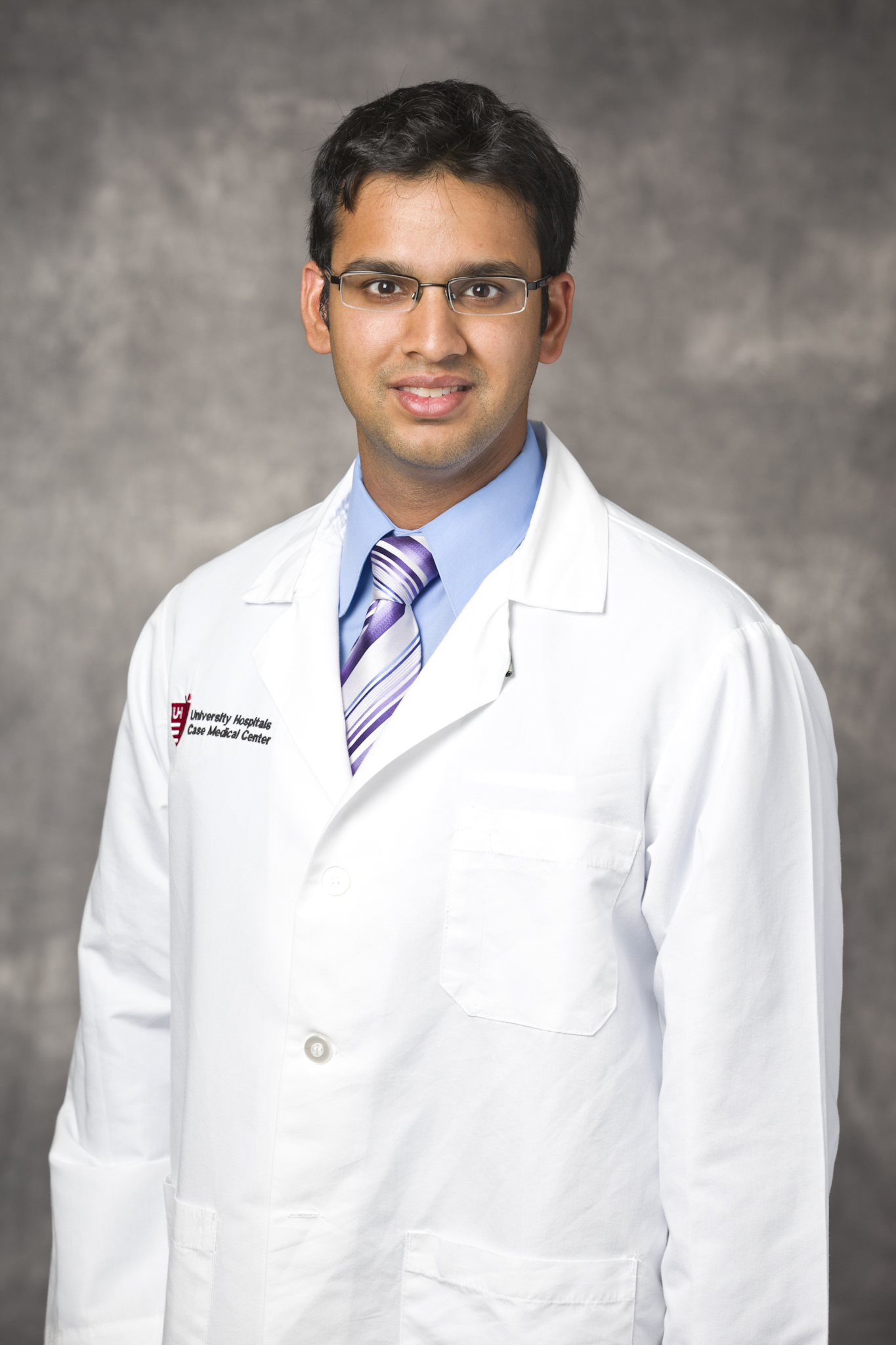Multidisciplinary Pediatric Aerodigestive Clinic at UH Rainbow Serves a Growing Patient Need
January 31, 2018

Innovations in Pediatrics - Winter 2018
In leading academic medical centers, the clear trend is toward multidisciplinary care of children with complex airway, swallowing and breathing issues.
“Often times, there are conditions such as reflux, bronchitis and upper airway issues that all go together,” says Jay Shah, MD, Director, Pediatric Aerodigestive Clinic, UH Rainbow Babies & Children’s Hospital and Assistant Professor of Otolaryngology and Pediatrics, Case Western Reserve University School of Medicine.
 Jay Shah, MD
Jay Shah, MD“We believe in a unified airway where disorders of the lungs, esophagus, stomach, and throat all can contribute to a child’s particular medical problem.”
Now in its second year, the Pediatric Aerodigestive Clinic at UH Rainbow relies on the expertise of specialists from otolaryngology, gastroenterology/nutrition, pulmonology, pediatric surgery, occupational therapy and speech therapy. When cases warrant, the clinic also coordinates access to experts in anesthesiology/sedation, cardiology, critical care, respiratory therapy and sleep medicine.
During a typical visit, the child and his or her family are seen by GI, pulmonology, ENT, surgery, speech and occupational therapy specialists in succession. The team then meets to develop an individualized care plan, which they share with the family that same day. If the child needs to have additional tests or surgery, the clinic’s patient navigator works with the relevant departments, surgical scheduler and the anesthesia group to make the necessary arrangements.
A diagnostic hallmark of the Pediatric Aerodigestive Clinic is the triple endoscopy (laryngoscopy, bronchoscopy and esophagogastroduodenoscopy), which allows visualization of the airways and upper digestive system in a single procedure – and a single exposure to anesthesia. Other diagnostic procedures of note include fluoroscopic and endoscopic feeding and swallowing evaluation, both wireless and esophageal impedance-pH monitoring, high-resolution esophageal manometry, nasal nitric oxide testing and testing for primary ciliary dyskinesia, in conjunction with UH Rainbow’s Primary Ciliary Dyskinesia Center – the first such center in the U.S. to be site-visited and fully approved by the PCD Foundation.
In its first two years, the Pediatric Aerodigestive Clinic at UH Rainbow has experienced rapid growth. From 2016 to 2017, for example, the average number of patient visits each month increased by nearly five-fold. At the same time, quality metrics and patient experience evaluations have remained high.
“Our continued success is due to excellent teamwork across many specialties, improved organization and overall compassion for treating these medically complex children,” says Dr. Shah. He also points to the important roles played by the UH senior leaders who have supported the clinic and the patient navigator who simplifies what can be a challenging and often-complicated care path for patients and their families.
A recent example shows just how complex these cases can be. The Pediatric Aerodigestive Clinic team discovered that their patient had a laryngeal cleft, diagnosed the patient with eosinophilic esophagitis, treated the patient for both bacterial and fungal bronchitis, and discovered that the patient had primary ciliary dyskinesia.
“A case like this shows just how valuable a clinic like ours can be,” Dr. Shah says. “We needed all the disciplines working together to best help this patient.”
For more information on the Pediatric Aerodigestive Clinic at UH Rainbow or to refer a patient, please email Peds.Innovations@UHhospitals.org.


